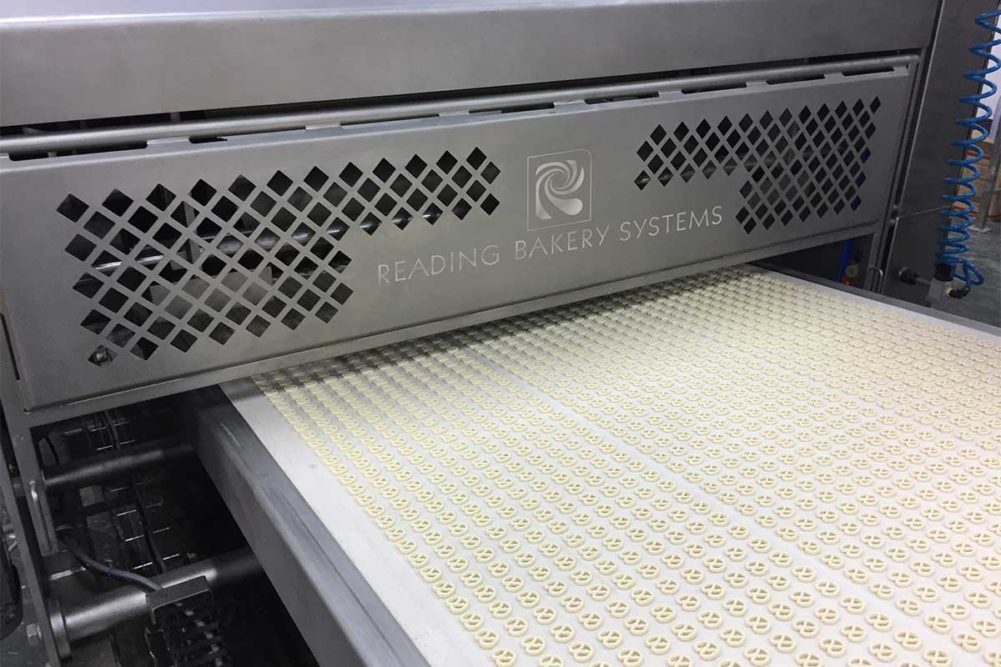America is a snacking nation, and consumers are looking for tasty treats that provide health benefits. One of the categories with a health halo is gluten-free products, which are expected to grow at a solid clip in the next several years.
The gluten-free market is forecast to expand at a CAGR of 9.8%, Grand View Research Inc. reported earlier this year, reaching $13.7 billion by 2030. Bakery makes up the largest part of that segment and is expected to maintain its leading role.
Some pretzel makers have jumped on the gluten-free bandwagon, and there’s plenty of space for others to hop on. But making gluten-free pretzels can leave producers feeling salty because these doughs can be tough and sticky to manage. But with any challenge comes industry best practices to help sweeten the deal for gluten-free pretzel makers.
Gluten-free pretzels pose difficulties for several reasons, including the fact they contain more dry ingredients than a regular pretzel.
“The main challenges when making a gluten-free pretzel are dough quality and piece weight accuracy,” said Nico Roesler, North American pretzel and snack equipment sales manager for Reading Bakery Systems. “In a wheat-based pretzel, you might see flour, dry yeast and maybe a leavening agent. That’s it for dry ingredients. Then you add your water, oil and maybe a syrup to the mix, and you’re done. Gluten-free-based doughs are often more complex because you need to add other binders and starches to the dry mix to give the dough strength.”
That can add up to six to seven dry ingredients that may need to be blended before going into a mixer with the liquid ingredients, he said, creating more responsibility for operators.
There’s a delicate balancing act to find the correct formulation to reach optimal elasticity.
“The biggest challenges with gluten-free product will be getting and maintaining the dough flexibility while using gluten-free flour,” said Lipika Mandal, food technologist, Spooner Vicars Bakery Systems, a Middleby Bakery company. “This can be generally overcome by adding gluten-free starches along with various binding/bonding agents.”
Supply chain challenges have made sourcing ingredients challenging, which can in turn lead to consistency problems, she said, adding that ingredients needed for gluten-free pretzels are generally more costly than those for regular ones. Underperforming formulations cause problems throughout processing, which means getting all the steps right before the pretzels are formed is crucial.
“If an unsuitable recipe, the wrong composition of ingredients or incorrect dough guidance is the basis of the dough strands, they can be ripped apart during the twisting process on the Fritsch Multitwist,” said Randy Kelly, applications specialist at Fritsch, a Multivac Group company. “Thus, the challenge lies more in the upstream and downstream steps of the whole process with regard to proofing and dough formation as well as flavoring.”
Gluten-free doughs often dry out more quickly than conventional ones, which can create problems for pretzel makers producing large quantities.
“If you make a 200-lb batch that will be processed and baked over the next 30 minutes, the dough that gets shaped and baked last is going to be much dryer than the dough that was shaped and baked immediately,” Mr. Roesler explained. “This will affect product quality, processability and breakage coming out of the oven.”
The use of continuous mixing, which was introduced to the pretzel industry in the mid-1990s, can mitigate the drying problem, which should create a more consistent product. Continuous mixing virtually eliminated the problem of dough setting too long before machining.
“A continuous mixing system automates the dry ingredient feed for mixing, as well as the liquid feed, and produces dough on an as-needed basis,” Mr. Roesler said. “So you do not have a large batch sitting for 30 minutes. Instead, the continuous mixer supplies a steady stream of dough to the low-pressure extruder, making the pretzel shapes, and each chunk of dough is exposed to the exact same amount of time from mixer to end of oven.”
This article is an excerpt from the October 2022 issue of Baking & Snack. To read the entire feature on Pretzel Processing, click here.






